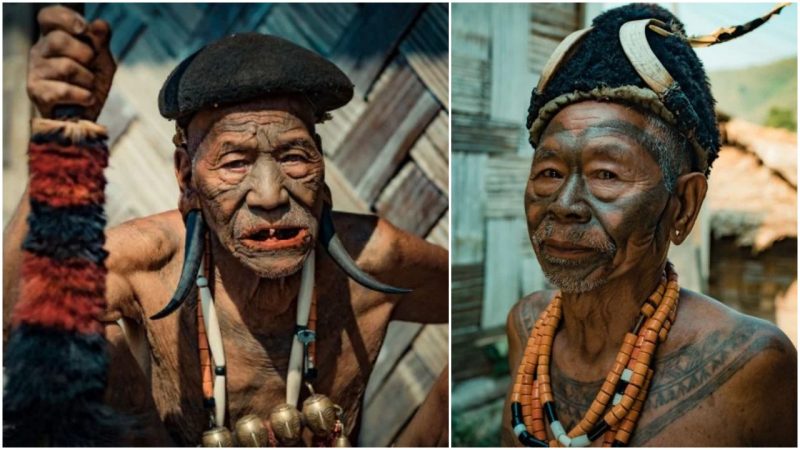According to the beliefs of the Konyak tribe, every human head has power, and several decades ago this was taken quite seriously by the members of this tribe. Dead seriously, if you will. For centuries, severing an enemy’s head was an integral part of their culture, and apparently, it was the only way for a young boy to be ushered into manhood.
Returning to the village with an enemy’s head in his hand would earn the hunter a facial tattoo, which was considered a symbol of the warrior’s great courage, bravery, pride, and strength. The design and the patterns of each headhunter’s tattoo varied and depended on the number of heads severed. The more enemies killed, the more intricate the design of the tattoo.
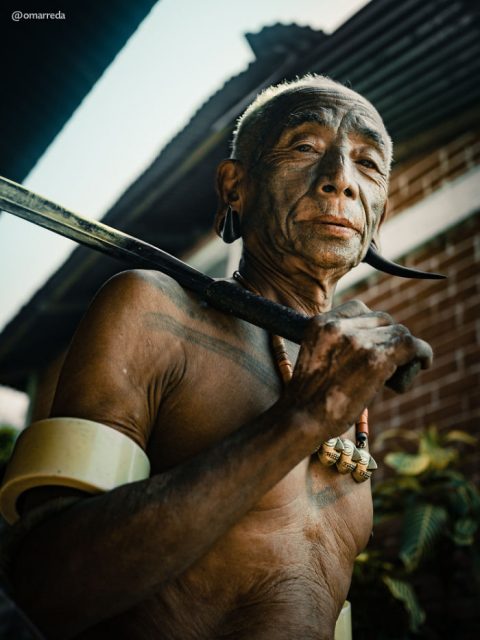
A decline in this practice began when the tribes in the area of Nagaland, India, where the Konyak tribe is situated, converted to Christianity–and it was finally banned by the government in 1935. However, some accounts state that the last case of headhunting occurred in 1969, meaning that some of the last fierce Konyak warriors can be still tracked down in Nagaland, and more importantly, their customs and tradition can be documented. And what better way to do this than with photography?
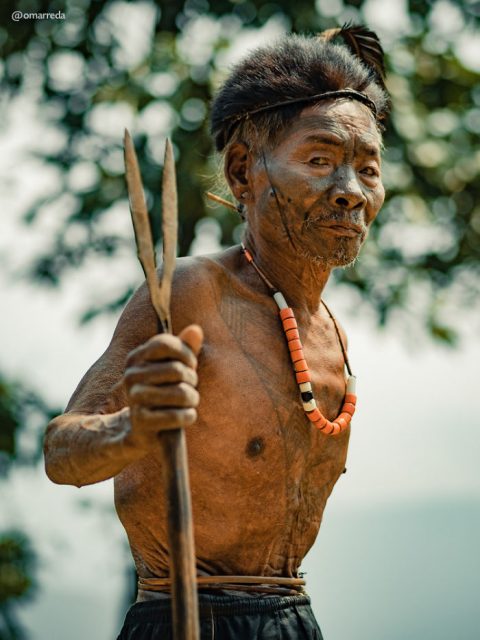
Lebanese graphic designer and photographer Omar Reda made exceptionally good use of this medium to document the last generation of Konyak headhunters and share their disappearing heritage with the rest of the world.
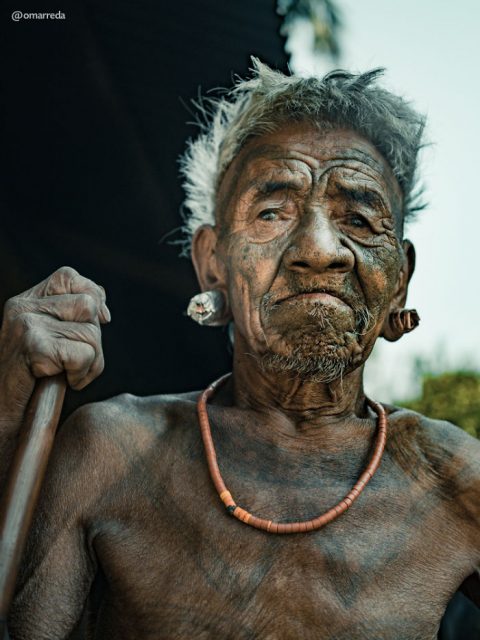
Reda, whose work can be seen on his Instagram account, travels extensively and has already documented the tattooed women of the Tharu tribe in Nepal.

He has also shared photographs from many other unique cultures from around the world. For his latest project, he traveled all the way to the mountainous region of Nagaland, where the last generation of the once notorious Konyak headhunters resides.
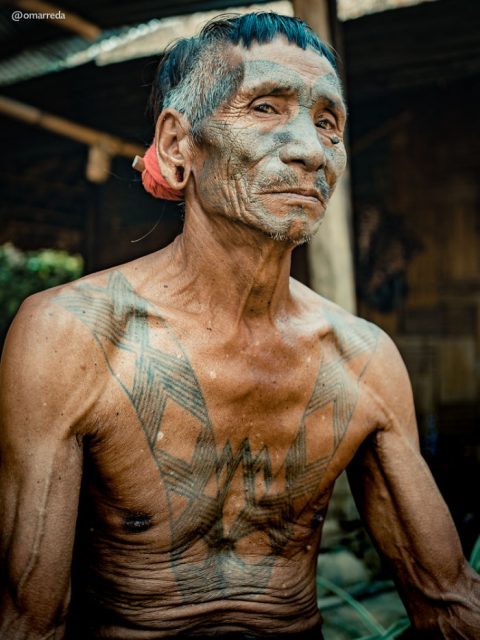
The photographer noted that, despite their fierce reputation, the former headhunters were actually quite friendly and hospitable to him. Most of them are now in their late 70s and 80s, so in 10 to 20 years almost all of them will probably be dead, which just adds more value to Reda’s visual record of these people.
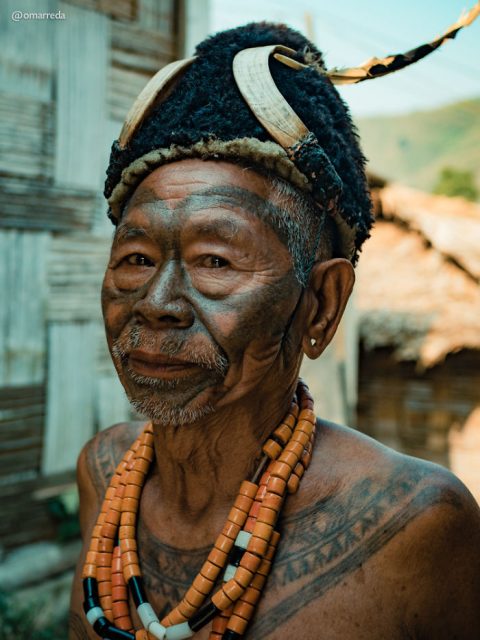
He admits that the tattooed faces of the old headhunters are very striking and reveals that “buffalos skulls decorate some houses walls around the villages,” which, according to him, “signifies the number of feasts each house has offered.”
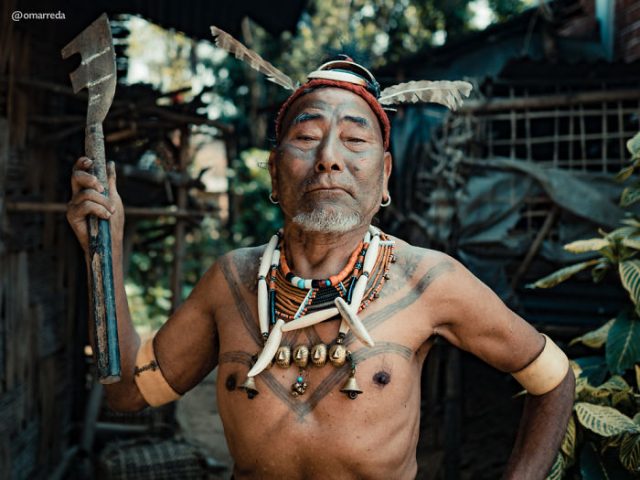
“During my visit, I saw one real human skull with two horns sealing the ears; they believe that it prevents the killed warrior from hearing what the living are talking,” the photographer writes.
There are no written records that can help us trace the history of the Konyak people and that is why historians have to rely on myths and legends that have been orally transmitted, and, as such, often happen to be contradictory. The Konyaks believe that their ancestors came to the region of Nagaland either from Longhong or from Southeast Asia.
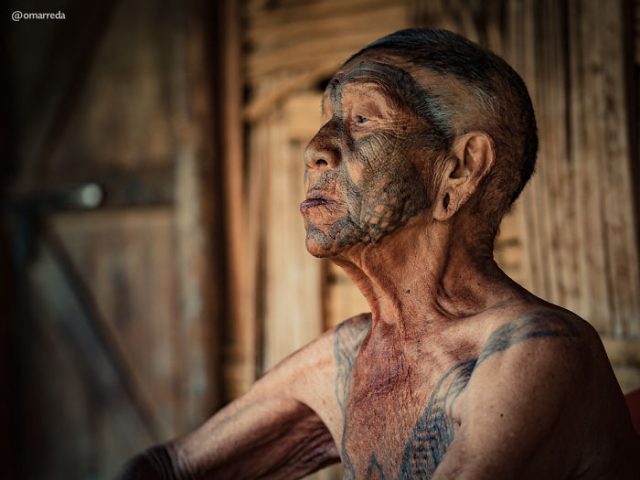
The Konyak tribe resisted both Christianity and modernization much longer than any other tribe in the area, mostly because many of their traditional practices, particularly the practice of headhunting, were seen as an essential part of their lives.

Once the Christian missionaries arrived in the region of Nagaland, things started to change and many of the Konyaks’ customs, traditions, and practices began to slowly disappear.
The brutal headhunting practice was no exception, and by the end of the 1960s, it was gone.
